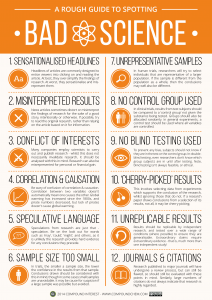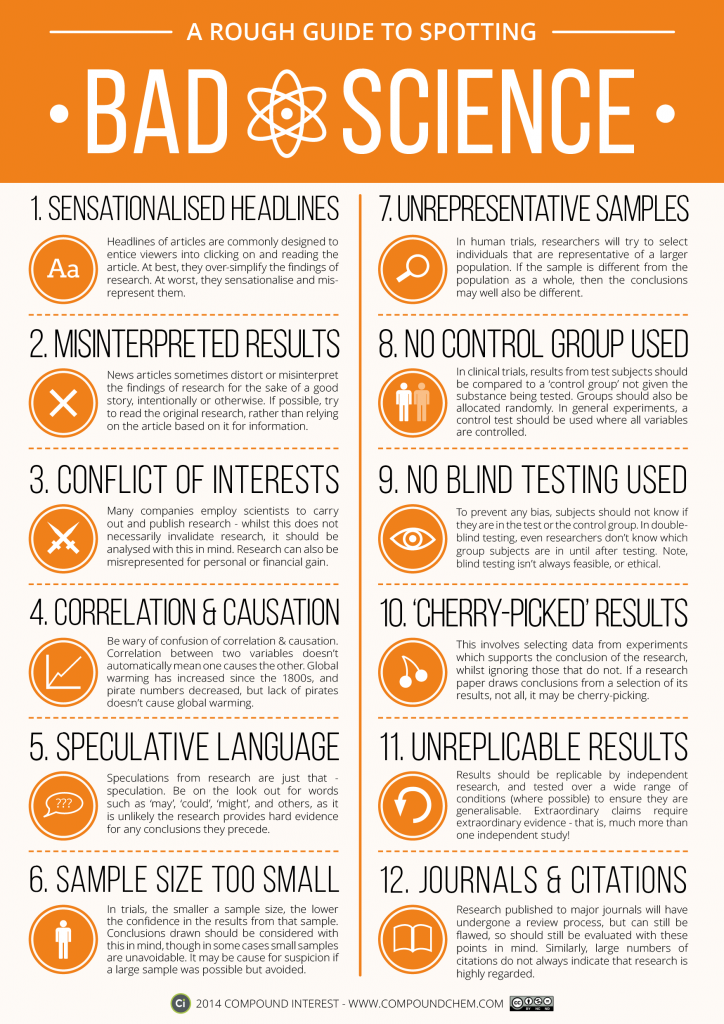A cigarette executive once stated: “Doubt is our product, since it is the best means of competing with the ‘body of fact’ that exists in the minds of the general public. It is also the means of establishing a controversy.”
The tobacco industry has a history of battling public health by trying to undermine the scientific evidence, and as a result research funded by all sectors must be critically analyzed to ensure meaningful results. However, this is true for all research not just for studies related to tobacco use.
A few specific examples illustrate this best. Recent media reports have highlighted that E-Cigs Have 15 Times More Cancer Causing Chemical Than Cigarettes and Sugar is hurting our hearts. These reports are based on studies published in high profile journals and therefore taken as fact by the media and the public. However, as was demonstrated by the recent issues around vaccination and its supposed yet scientifically invalid link to autism, no publication is immune to bad science. The Lancet, a leading medical journal, retracted a 1998 article that linked autism to vaccines.
These studies (and many others) are not the result of strong research, and interpreting the results as fact is a danger to public health.
- Fiction shared as fact: E-cig use results in high levels of formaldehyde The recent NEJM study that found vaping was linked with high levels of formaldehyde was performed under highly unlikely conditions, where the e-liquid would be overheated and produce a strong unpleasant taste that would stop use by the vaper. Read more details about the full study design here.
- Fiction shared as fact: Sugar causes cardiovascular disease A recent JAMA article discusses a study that linked added sugar intake with increased risk of cardiovascular mortality. However, this study did not adjust for overall calorie intake and the relationship between added sugar intake and CVD mortality remains unresolved.
Some public health advocates such as Clive Bates watch for poor science and work to ensure only high quality research is published, but once research is released to the media it is nearly impossible to ensure the message is clearly understood by the public.
Readers of scientific research must critically analyze the research methods to understand the interpretation of the resulting evidence, and should not take media reports at face value before careful review after all, we know that strong headlines sell better, but that in science everything lies in the nuances.
Have you ever spotted bad science in an article, or a misleading headline? Do you have ideas on how individuals can contribute to reducing bad science, other than posting comments on articles that portray it? Let us know your thoughts by commenting below or tagging us on Twitter @VitalityInst.

Source of Thumbnail: http://www.langmaidpractice.com/blog/bad-science/







